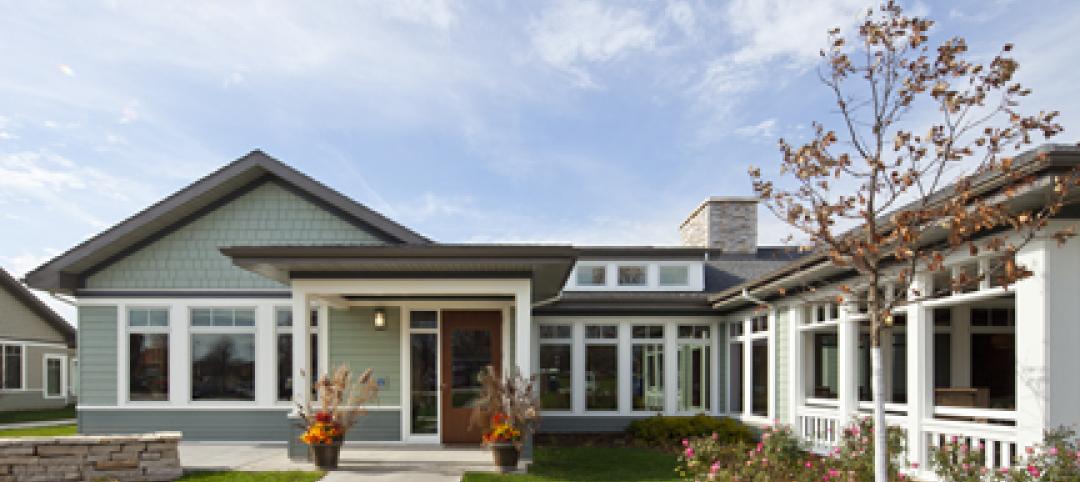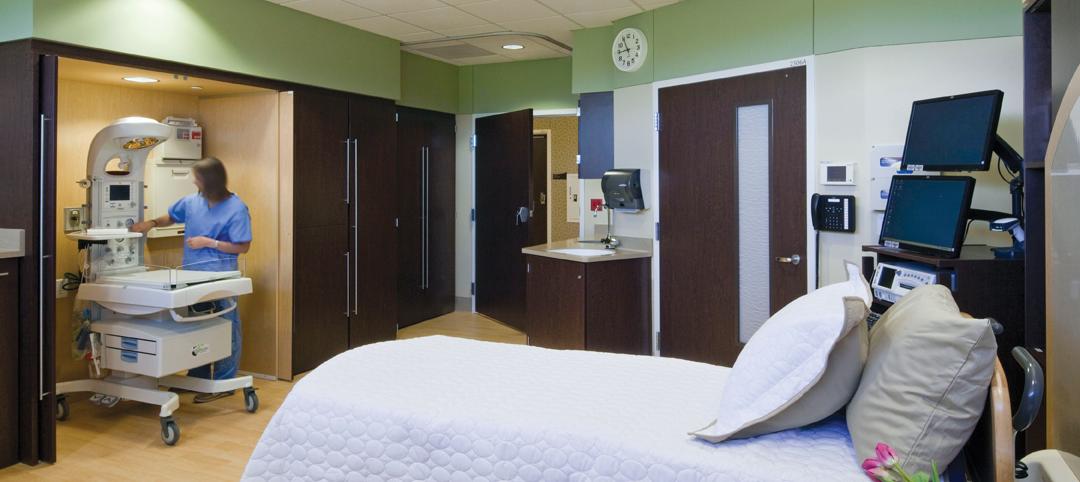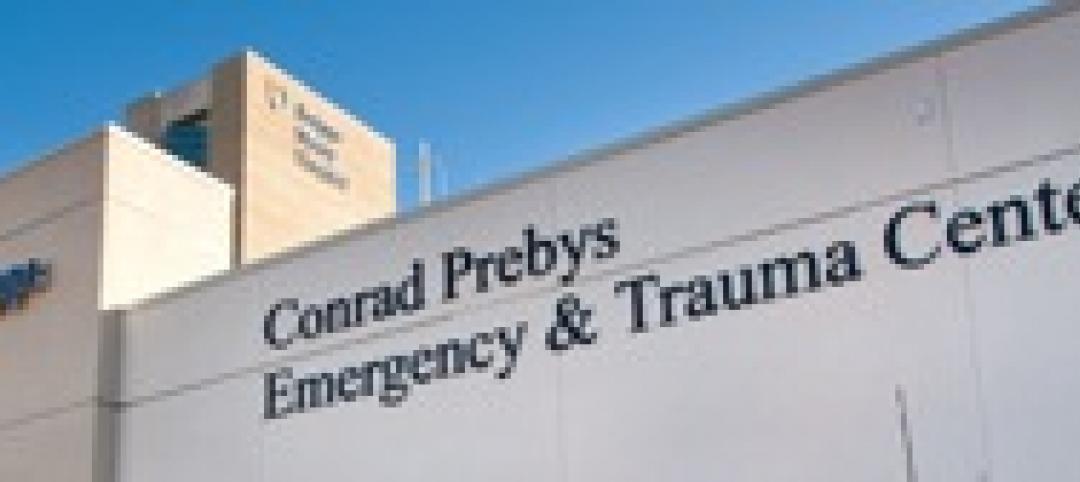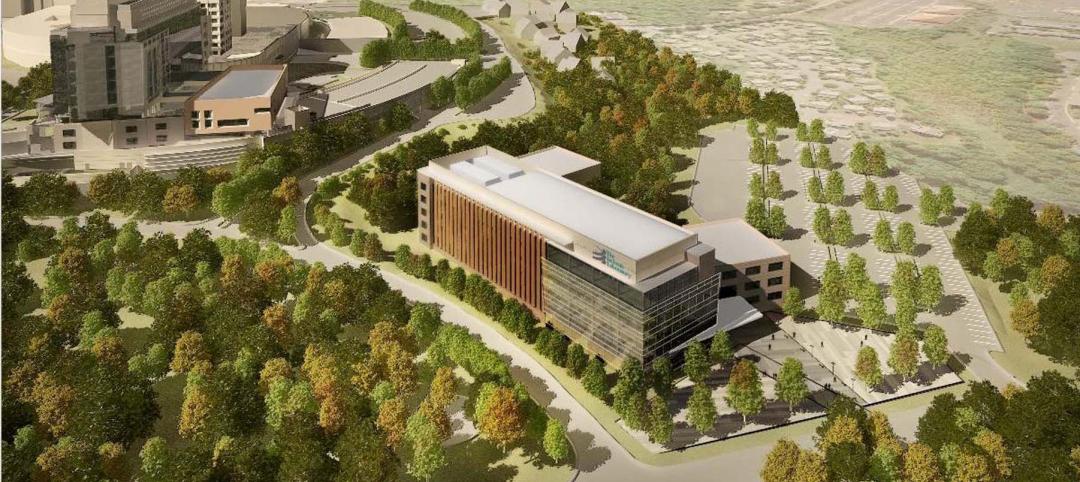Memorial Sloan Kettering Cancer Center, one of the premier cancer treatment hospitals in the world, had a problem. A recent analysis of patient volumes showed that it would run out of space for new construction at its Upper East Side campus in Manhattan in just a few years. It did own a site at East 61st Street and York Avenue, near the East River and seven blocks from its main campus at 1275 York. But the parcel was only 100 by 115 feet. On top of that, it was also within a floodplain.
MSK had never built on such a small site. “We realized that we would be developing a new paradigm,” says Suzen L. Heeley, IIDA, LEED AP, MSK’s Executive Director of Design and Construction. The design would have to take into account all support services and staff needs, since staff would be in the building for their entire shift.
The solution: go vertical. The result, devised by MSK and its architect, Perkins Eastman, is the 179,000-sf, 16-story Josie Robertson Surgery Center, which opened in December 2015.
Perkins Eastman addressed the floodplain problem by moving the mechanical systems to higher floors, “hardening” the building against flooding, says Jeffrey Brand, AIA, EDAC, Principal. Several variances were also required, including one for the surgical program, which called for uninterrupted floor plates. Operating rooms were stacked vertically on three floors, with care areas designed for specialty procedures.
Accommodating three elevators (one each for the public, patients, and service staff) reduced the floor plate to about 8,000 sf, forcing the hospital and its Building Team to come up with what Heeley calls “a new architectural and operational model.”
A key goal of the center is to limit patient stays to a few days, so encouraging patient mobility is important. (Only a small percentage of the surgery center’s patients get admitted to MSK’s main hospital.) The recovery area includes a figure-eight corridor to encourage patients to move around. They have to leave their beds to get breakfast.
The patient experience has been enhanced from admission to release, says Heeley. The waiting area features The Beehive, a reception kiosk for checking in. Patients are assigned a designated caregiver and given a location badge, which tracks their movements throughout the stay in real time. In the first six months of operation, the badges (from HealthLoop) recorded 248,000 patient touch points.
The waiting area also has “campsites,” where patients and families can gather without having to move a lot of furniture. Brand says these areas are like living rooms, with a food bar, a business center, a library, and places where children can play Wii.
Staff comforts were not ignored. The design infuses plenty of daylight throughout the core of the building. The staff-only top floor, known as The Mixing Bowl, provides food service, conference and business areas, and spaces where clinical staff can mingle informally. Other rooms include The Soap Box (for dining and meeting) and places for computer workstations.
The building has become so popular with staff members that there’s currently a waiting list of employees who want to work there.
Josie Robertson borrows many of its design and construction ideas from the hospitality sector. Perkins Eastman collaborated with the New York–based interior design firm iCrave—known primarily for its restaurant and airport work—to make the interior spaces emulate a home-recovery experience.
The walkways in the post-anesthesia care floors are filled with artwork. There’s room for patients to exercise and socialize. Wood finishes, with their soothing, organic texture, are prevalent throughout.
“We wanted something different,” says Heeley. She admits that MSK’s leadership was nervous about bringing in iCrave, but felt confident that Perkins Eastman, which has been designing for MSK for decades, had the healthcare chops to keep the project on track. Controlling the budget did take some “curating,” she says, when it came to choosing lighting, furniture, and flooring.
Heeley says that elements of the Josie Robertson concept will inevitably find their way into future MSK projects, including the 750,000-sf Robert Koch Center for ambulatory care. “We’re designing in a flexible way to be able to make changes quickly,” she says.
Related Stories
| Mar 6, 2012
Country’s first Green House home for veterans completed
Residences at VA Danville to provide community-centered housing for military veterans.
| Mar 1, 2012
7 keys to ‘Highest value, lowest cost’ for healthcare construction
The healthcare design and construction picture has been muddied by uncertainty over the new healthcare law. Hospital systems are in a bind, not knowing what levels of reimbursement to expect. Building Teams serving this sector will have to work even harder to meet growing client demands.
| Feb 29, 2012
Construction begins on Keller Army Community Hospital addition
The 51,000 square foot addition will become the home for optometry, ophthalmology, physical therapy, and orthopedics clinics, as well as provide TRICARE office space.
| Feb 29, 2012
Shepley Bulfinch selected to design new Children’s Hospital of Buffalo
The firm was selected because of their past experience in designing clinically complex facilities that emphasize patient- and family-centered care and operational efficiency as well as distinctive architectural forms for many other children's and women's hospitals.
| Feb 28, 2012
More than 1,000 have earned EDAC certification since 2009
Milestone achieved as evidence-based design becomes a top 2012 strategy for healthcare organizations.
| Feb 28, 2012
McCarthy completes second phase of San Diego’s Scripps Hospital
Representing the second phase of a four-phased, $41.3 million expansion and remodeling project, the new addition doubles the size of the existing emergency department and trauma center to encompass a combined 27,000 square feet of space.
| Feb 28, 2012
Griffin Electric completes Medical University of South Carolina project
The 210,000-sf complex is comprised of two buildings, and houses research, teaching and office areas, plus conference spaces for the University.
| Feb 22, 2012
CISCO recognizes Gilbane for quality construction, design, and safety
The project employed more than 2,000 tradespeople for a total of 2.1 million hours worked – all without a single lost-time accident.
| Feb 14, 2012
The Jackson Laboratory announces Gilbane Building Co. as program manager for Connecticut facility
Gilbane to manage program for new genomic medicine facility that will create 300 jobs in Connecticut.















